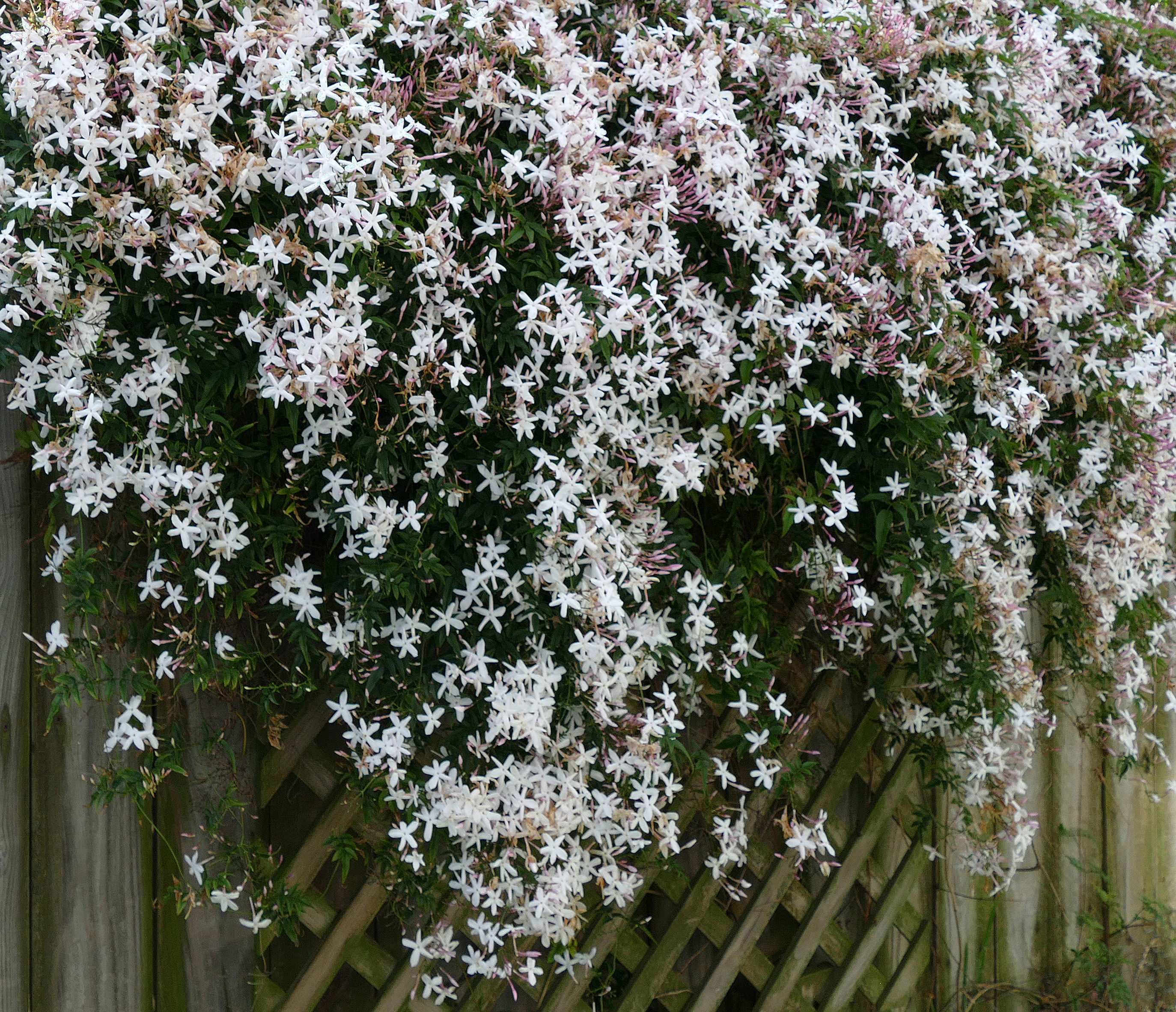Description
Jasmine, (genus Jasminum), genus of about 200 species of fragrant-flowered shrubs and vines of the olive family (Oleaceae). The plants are native to tropical and to some temperate areas. Most true jasmines have climbing branches without tendrils. The white, yellow, or rarely pink flowers are tubular with a flaring, lobed, pinwheel-like form; some double-flowered varieties have been developed. They are also occasionally used in teas.
In Sri Lanka, crepe jasmine (Samanpichcha, aka Tabernaemontana divaricata, aka the pinwheel flower) shrubs grow almost everywhere, usually cultivated in small gardens or left to grow by the wayside. Its flowers are widely used in religious ceremonies. Other varieties exist, such as wal pichcha (a vine that bears flowers similar to crepe jasmine) and etteriya aka orange jasmine, which grows into a short tree.
Planting requirements
Almost all jasmines do well in tropical conditions and are hardy growers that need little maintenance except pruning. For most jasmines, it's best to provide a support structure (either a trellis or wall) that the vine can climb across. You can also grow jasmine in large pots.
Planting season: Year-round in most parts of Sri Lanka. Recommended planting season: May to June and Octorber to November
Planting conditions:
| Propagation | Propagated through cuttings, layering, suckers, grafting, budding, tissue culture |
|---|---|
| Planting method | Plough the soil and bring the soil to a proper tilt stage and then dig pits the size of 30cmX30cmX30cm. It's best to expose these pits for 2-3 weeks beforehand for sunlight to eliminate soil borne diseases and mites |
| Soil | Grows in a variety of soils. However, grows well in well drained loamy soil that is rich in organic matter with a pH between 6.5 and 7.5 |
| Water | Timely watering is important for good growth and production of flowers |
| Light | Requires 6 hours of direct sunlight |
Growing conditions:
| Temperatures | Needs a soil temperature between 15° to 24° |
|---|---|
| Soil | Keep the soil weed free. If possible, add mulch to prevent weed, soil erosion and retain water moisture |
| Water | Drip irrigation is preferred. First irrigate the plant immediately after planting. Otherwise 4-5 days of irrigation depending on climate and soil type |
| Pruning | Prune to control growth or to encourage more flowers |
| Weed control | Handpick weeds regularly, especially during the first year |
Harvesting
Jasmine starts flowering after 6 months of planting and can be harvested throughout the year.
Curing
Jasmine does not require a curing stage.
Storage
Fully developed flower buds should be handpicked in the early morning and late evening and can last for up to two weeks if kept in a cool place.
Protecting your plants
Pest control
Pest type:
- Aphids
- Spider Mites
- Whiteflies
- Bud Worms
- Leaf Webbers
- Mealybugs
- Scales
Symptoms:
- Aphids: Discoloration of leaves, distorted growth, presence of sticky honeydew.
- Spider Mites: Fine webbing on leaves, yellowing, and stippling.
- Whiteflies: Yellowing leaves and sticky residue; often accompanied by sooty mold.
- Bud Worms: Damaged or dropped flower buds, tunneling in buds.
- Leaf Webbers: Scraped leaves covered in silk webs.
- Mealybugs: White, waxy masses on leaves and stems.
- Scales: Distorted leaves and potential leaf drop.
Control method:
- Aphids: Use insecticidal soap or neem oil; introduce natural predators like ladybugs.
- Spider Mites: Increase humidity around plants; spray with water or use miticides.
- Whiteflies: Use yellow sticky traps; apply insecticidal soap.
- Bud Worms: Hand-pick or use Bacillus thuringiensis (Bt) as a biological control.
- Leaf Webbers: Prune affected areas; apply horticultural oil.
- Mealybugs: Spray with water or insecticidal soap; remove manually if possible.
- Scales: Prune heavily infested areas; use horticultural oil or introduce beneficial insects.
Disease Control
Disease type:
- Powdery Mildew
- Crown Gall
- Rust
- Fusarium Wilt
- Leaf Spot
Symptoms:
- Powdery Mildew: White powdery coating on new growth; deformed buds and flowers.
- Crown Gall: Lumps or galls at the base of the plant restricting water uptake.
- Rust: Orange pustules on undersides of leaves; distorted growth.
- Fusarium Wilt: Stunted growth and wilting, starting with lower leaves turning yellow.
- Leaf Spot: Dark spots on leaves that can lead to leaf drop.
Management:
- Powdery Mildew: Apply fungicides containing sulfur or potassium bicarbonate; improve air circulation.
- Crown Gall: Remove infected plants and avoid wounding during care; ensure good hygiene practices.
- Rust: Use copper or sulfur fungicides; remove infected plant parts promptly.
- Fusarium Wilt: Improve soil drainage; rotate crops to prevent recurrence.
- Leaf Spot: Remove infected foliage; apply appropriate fungicides based on the pathogen involved.
Sources
In addition to our General List of Sources (link), we used these specific references:
- https://mpns.science.kew.org/mpns-portal/searchName?searchTerm=jasmine&nameType=all
- https://gardeningsolutions.ifas.ufl.edu/plants/trees-and-shrubs/shrubs/crepe-jasmine/
- https://www.gardeningknowhow.com/ornamental/flowers/jasmine/jasmine-pest-control.htm
- https://www.gardenia.net/guide/jasmine-how-to-grow-and-care-with-success
- https://chameliflower.com/jasmine-companion-plants/
- https://www.dilmahconservation.org/arboretum/plants-and-trees/walpichcha-wekonda--b32f0281abfd997f5371827beb12de10.html
- https://www.dilmahconservation.org/arboretum/plants-and-trees/etteriya--e424a2d68f359d1ccb060fcd8da2f290.html
- https://www.silverstonegardening.com.au/everything-you-need-to-know-about-jasmine/
- http://www.agritech.tnau.ac.in/horticulture/horti_flower%20crops_malligai.html
- https://gardenerspath.com/plants/flowers/jasmine-diseases/
- https://www.gardeningknowhow.com/ornamental/flowers/jasmine/jasmine-pest-control.htm
- https://ipm.ucanr.edu/PMG/GARDEN/PLANTS/starjasmine.html
- https://blog.agribegri.com/en/blog/13-common-jasmine-plant-problems-how-to-fix-them-solutions-and-treatment
